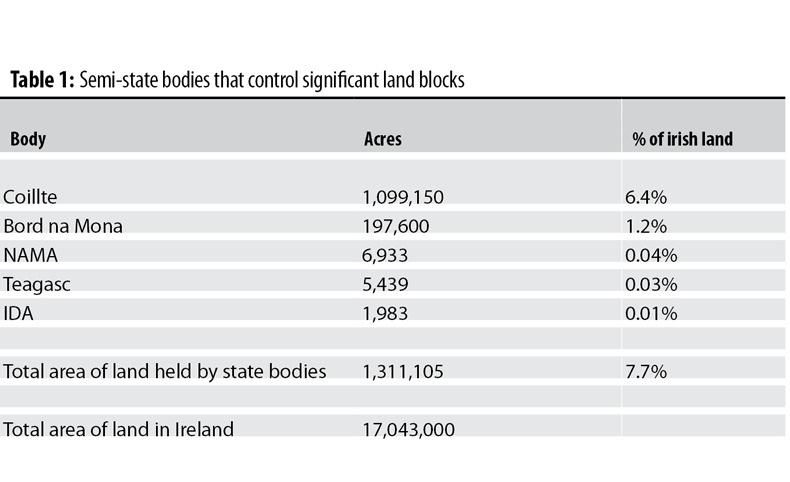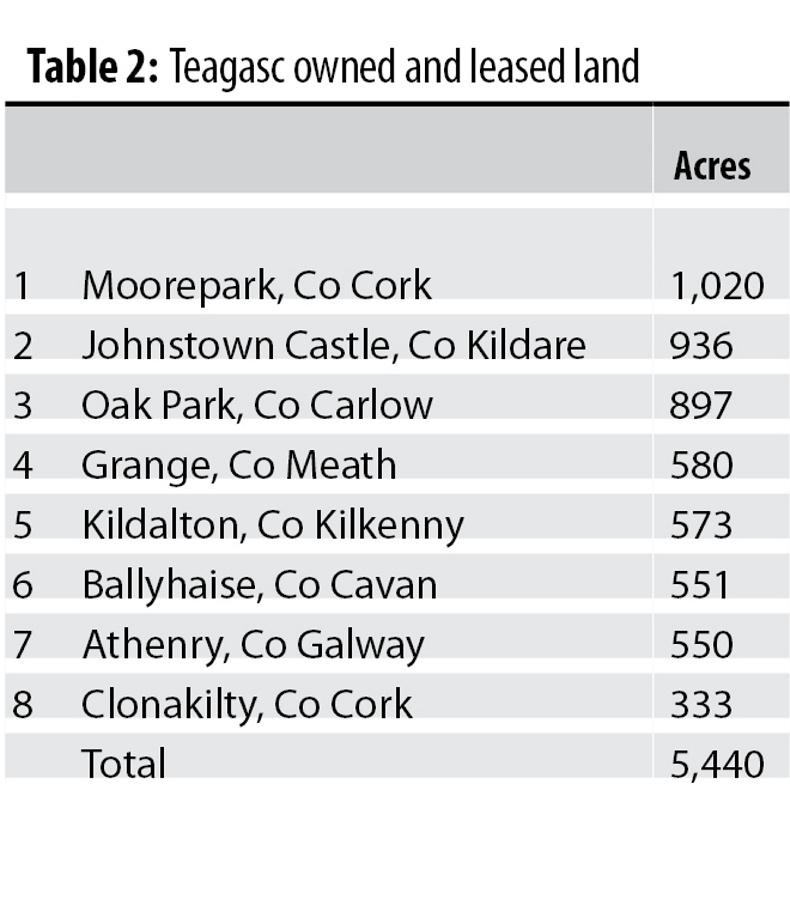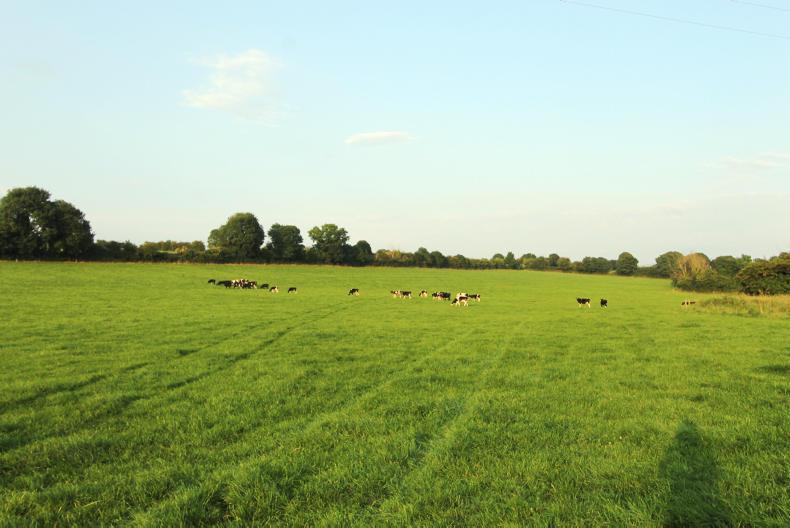While the vast majority of Irish land is in private ownership, a significant proportion of the more than 17m acres of land area in this country is controlled by the various arms of the Irish State. These bodies use the land for both commercial and research purposes, while also ensuring the tax-paying public retains ownership of a healthy land portfolio.
As can be seen in Table 1, five separate bodies control a combined 7.7% of the total land area in Ireland, which equates to about 1.3m acres.
Coillte
Coillte is undoubtedly the semi-state body with the largest land portfolio. The forestry body controls a land bank extending close to 1.1m acres, which is about 6.4% of all the land in Ireland. And this portfolio is growing. Coillte has recently become active in the land market again after a number of years where activity was restricted due to financial pressures within the organisation.
In February this year, Coillte secured a €90m long-term loan to invest in maintaining its existing forestry network, create recreational forest roads and cycle tracks as well as to plant new tracts of land in forests. But Coillte chief executive Fergal Leamy was also clear that this funding would be used for the acquisition of new areas of land for afforestation in the years ahead. With Coillte in expansion mode under new boss Leamy, the size of its land portfolio is expected to grow in the years ahead.
Bord na Móna
It will come as no surprise to learn that Bord na Móna is another State body with a large land bank under its control. According to its latest annual report, Bord na Móna controls just under 198,000 acres of Irish land, almost all of which is classified as bogland or peatlands. This equates to just over 1% of all the land in Ireland.
Bord na Móna is in the midst of a transition, moving its business model away from producing peat-fuelled energy to more sustainable forms of energy such as wind power. Ten years ago, just 2% of the electricity Bord na Móna produced was generated from renewables. Today it is 48% and by 2020 it will be 70% with 96% expected by 2030.
Despite this evolution in the business, Bord na Móna should continue to control a sizeable land portfolio in the years ahead. The company aims to develop its peatlands into more windfarms while simultaneously developing the eco-tourism potential of these large land areas by investing in cycle tracks, walkways and tourist amenities.
NAMA
The National Asset Management Agency, more commonly referred to as NAMA, also holds a sizeable volume of land within its asset portfolio. In total, NAMA holds less than 8,000 acres of land within its portfolio. However, this is heavily weighted to land classified as residential development land. When contacted by the Irish Farmers Journal, a spokesperson for NAMA said the organisation had “very little exposure” to agricultural land in Ireland.
Just over 6,930 acres of the total land bank is classified as residential development land, which is almost 90% of the entire. Land parcels that NAMA would deem to be agricultural in nature are those that are not zoned for residential or other development use and is classed under “Land” in the NAMA annual report.
Out of its total land portfolio, NAMA confirmed to the Irish Farmers Journal that it holds 931 acres of agricultural-type land. This is about 12% of its total land holdings. Interestingly, the vast majority of this land (627 acres) is situated in Co Dublin. The remaining 304 acres are located around the rest of the country.
NAMA added that it expects the 627 acres of land in Dublin to be prioritised by future local authority development plans, or plans from other designations, in terms of residential or commercial zoning.
IDA
The Industrial Development Authority (IDA) of Ireland is also a body that keeps a large pool of land under its control at all times. Its mission statement is to attract foreign investment to Ireland and it keeps a sizeable land bank at all times in order to facilitate foreign companies that might have plans to develop new factories or manufacturing plants here.
A spokesperson for the IDA confirmed to the Irish Farmers Journal the State body currently has control of 803ha, or just under 2,000 acres of land, dotted around the country.
The IDA manages this pool on a regular basis, adding and disposing of land as companies express an interest in a location. IDA lands are marketed to IDA clients on a constant basis. Occasionally, the IDA will seek tenders for letting the land out to farmers for grazing, hay and silage use.
This is done to maximise the commercial return to the State from the land bank while the IDA seeks out enterprise development. These short-term letting agreements can be terminated with 30 days’ notice should the land be required for an overseas company.
Teagasc
Unsurprisingly, Ireland’s farming and food research body Teagasc controls a major volume of farmland spread out across eight counties. In total, Teagasc has control of 5,440 acres of land with over 4,100 acres owned and a further 1,340 acres leased (see Table 2).
Teagasc’s largest individual land holding is the Moorepark research dairy farm in Co Cork, which extends to more than 1,000 acres, with almost 580 acres of this leased. The Oak Park facility in Co Carlow extends to almost 900 acres but some of this includes over 300 acres of rented potato farms located at various locations.
Teagasc Grange, the beef research centre in Co Meath, extends to over 580 acres and is wholly owned by the semi-state body. The smallest block of land operated by Teagasc is the 333 acres located at its Clonakilty facility. Neither of Teagasc’s Dublin facilities at Ashtown and Kinsealy are included in these figures.








 This is a subscriber-only article
This is a subscriber-only article











SHARING OPTIONS: